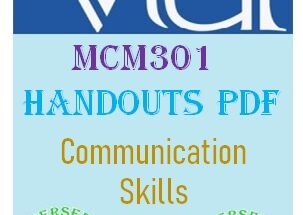Table of Contents
CS709: Formal Methods for Software Engineering Handouts (PDF)
Formal methods are techniques used by software engineers to model complex systems as mathematical entities. In software engineering, it is a technique that incorporates mathematical expressions to represent the “abstract representation” of a system. CS709 Handouts pdf
CS709 Handouts pdf
Course Category: Computer Science/Information Technology CS709 Handouts pdf download
Course Outline
|
Introduction, Limitations of testing and need for formal verification, Overview of logic and propositional calculus, Calculational Logic, Logical Connectives, Boolean Equality, Continued Equivalence, Disjunction, Conjunction, Implication, Introduction to Hoare’s Logic, Weakest pre-condition, The assignment axiom, Calculating assignments, Sequential composition, Conditional statements, Reasoning about conditional statements, Constructing conditional statements, Inductive proofs and constructions, Patterns and invariant, From verification to construction, Design by Contract (DBC), CS709 Handouts pdf |
|
| The six principles of Design by contract, UML and Formal Methods, The Object Constraint Language (OCL), Algebraic Specifications, Specifications of abstract data types, Completeness, Axioms, and term rewriting, Modularity and reusability, Model-based specifications, The Z (Zed) specification Language, Z Schemas and Schema Calculus, Promotions, Data and functional refinements, Petri Nets, Limitations and Acceptance of Formal Methods, Seven Myths of Formal Methods. CS709 Handouts pdf |
Join VU assignment solution groups and also share with friends. In these WhatsApp groups, we send solution files, VU handouts, VU past papers, and links to you. To join WhatsApp groups click the below links.
ALSO, SEE:
FINAL TERM PAST PAPERS MEGA FILES
MUST JOIN VU STUDY GROUPS

CS709 HANDOUTS
CS709: Formal Methods for Software Engineering
Formal Methods
Formal methods system design techniques that use strictly defined mathematical models to build software and hardware programs. Unlike other design systems, formal methods use mathematical evidence as compliant with systemic testing to ensure proper behavior. As systems become more complex, and security becomes more important, the formal design of the system provides another level of insurance.
Formal verification is closely related to hardware compatibility and software design performance. Because validation uses formal mathematical evidence, a suitable mathematical model should be created for the design. Today, both verification and verification procedures are performed to analyze the application of the design.
Steps in Formal Design
The formal design can be seen as a three-step process, following the framework given here:
1. Formal Specification
During the formal specification phase, the engineer firmly defines the system using modeling language. Modeling languages are embedded language programs that allow users to model complex structures without the types described earlier. This process of formalization is similar to the process of converting a word problem into an algebraic note.
2. Verification
As mentioned above, formal methods differ from other specification systems with a strong emphasis on feasibility and accuracy. By building a system using formal specifications, the designer is actually developing a set of ideas about his or her system. By proving that these theories are correct, formal validation is a difficult process, especially since even a simple system has several theorems, each of which must be substantiated.
3. Implementation
Once the model is specified and verified, it is used to convert the specification into code. As the gap between software and hardware design grows smaller, formal ways to develop embedded systems have been developed. LARCH, for example, has VHDL implementation. Similarly, hardware programs such as VIPER and AAMP5 processors have been developed using formal methods.
Software Testing Limitations
- Software testing as part of the legacy of the entire software development process also has some limitations.
- Testing does not give you any help when you have to decide whether “you should release a defective product to meet the deadline” or “you should release it late by risking the deadline”.
- Software testing does not predict or limit product performance under different conditions, but may be helpful in providing information w.r.t. Improper or incorrect product performance.
- While injecting errors, software testing cannot detect the causes that may help in correcting errors in the first place. Identifying the causes of disability/errors helps in injecting disability according to future goals.
- Testing cannot be performed against system requirements. And we will not be able to see any flaws in the requirements or specific requirements that lead to a complete evaluation process for inadequate testing.
- We use testing to reveal many hidden errors but this method does not guarantee error-free. It is only used to identify known errors. It does not provide any information about those errors that remain undetected


